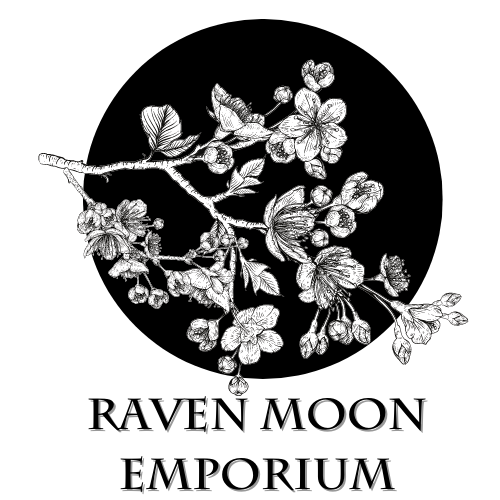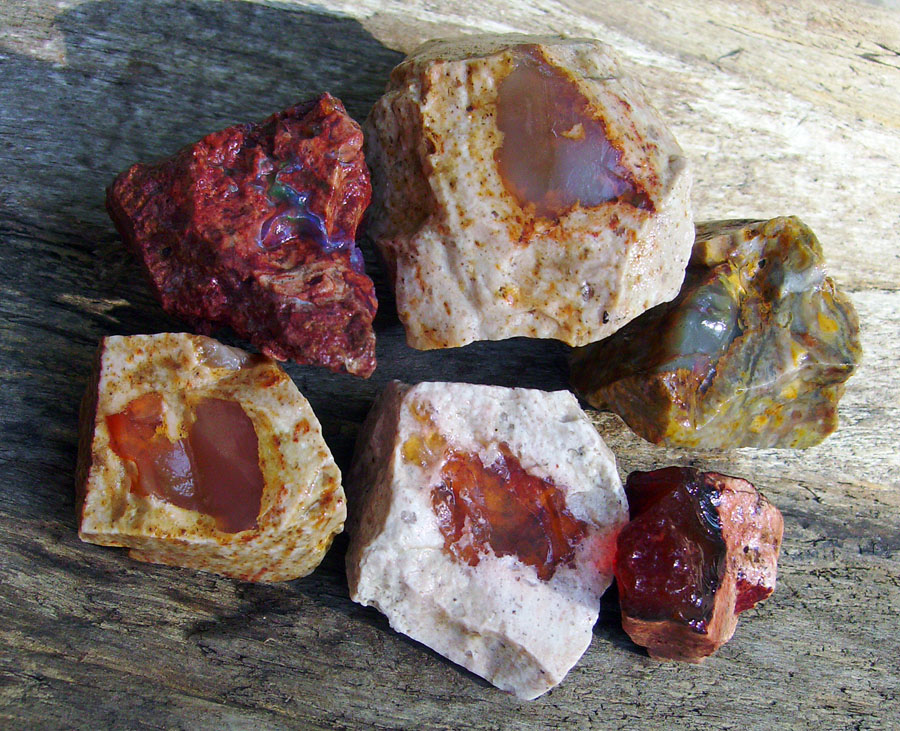Opals are unique crystals prized for their healing ability. But what is it that we are actually working with? Here is a breakdown of all of the opals we have in stock and how you can use them! Remember to always cleanse and program your crystals before you use them!
What are Opals?
Opal is a hydrated amorphous form of silica; its water content may range from 3 to 21% by weight, but is usually between 6 and 10%. Because of its amorphous character, it is classed as a mineraloid, unlike the other crystalline forms of silica, which are classed as minerals. It is deposited at a relatively low temperature and may occur in the fissures of almost any kind of rock, being most commonly found with limonite, sandstone, rhyolite, marl, and basalt.
The early Greeks believed opal bestowed its owner with the powers of foresight and prophesy. Romans perceived opal as a token of hope and purity. Arabs believed it fell from heaven. Medieval peoples, however, associated opal with the Evil Eye and even the Black Plague or thought it made a person invisible when the gem was wrapped in a bay leaf. Queen Victoria boosted opal’s popularity by making it a court favorite. More recently, as October’s birthstone, opal is thought to bring luck–but only to those born in October.
How many types of Opals are there?
Gem Quality Opals: Gem-quality opal is one of the most spectacular gemstones. A single stone can flash every color of the spectrum with an intensity and quality of color that can surpass the “fire” of diamond. The best opals can command prices per carat that rival expensive diamonds, rubies, sapphires, and emeralds. This is why opal is one of the world’s most popular gems.
Common Opals: “Common opal,” sometimes known as “potch”, is a variety of opal that does not exhibit the flash and “play-of-color” seen in precious opal. However, common opal occurs in a variety of beautiful colors that includes a range of wonderful pastels. Common opal is found in a greater range of colors than most other gems. At present and in the past, common opal is not often seen in commercial or designer jewelry. That is because it is not widely known and supplies can be limited. If any gem is underappreciated, common opal is it. But, that comes with a bonus. Common opal is not extremely expensive. Beautiful pieces can be purchased for prices that anyone can afford!
In terms of Metaphysics, Common opals work just as well as Gem Quality Opals! It all starts with how Opals are formed. This dictates what types of energy will be part of this amazing crystal! Common Opals are magnificent for metaphysical purposes, vibrating at a lower frequency than the transparent or fiery Opals, and provide gentle, nurturing support for all types of healing work.
Common opal is found in many of the same environments as precious opal. It is often found associated with volcanic activity – especially ashfalls. It is also commonly found in sedimentary rocks underlying areas with an arid climate. There, the minimal rainfall dissolves silica during infiltration and deposits it at depth in fractures and cavities. Most deposits of common opal are of limited geographic extent and volume. At the present time, none are large enough for highly mechanized mining. Many are so small that a team or a family of just a few people can work them out in a few field seasons or less.
Peruvian Pink Opals (Andean Opals)
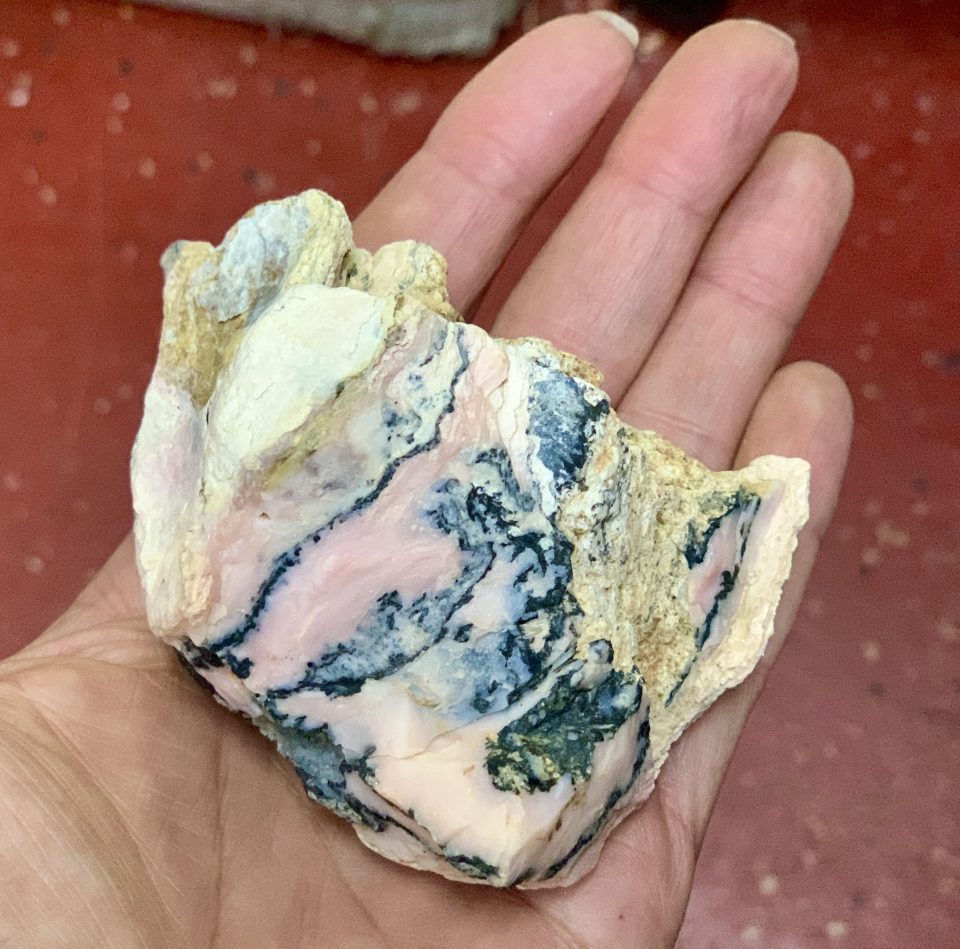
The South American country of Peru is the source of some of the world’s most beautiful opals. Peruvian opal is found in wonderful pastel blues, greens and pinks. These are common opals that lack the “play-of-color” of precious opal – but the color of this material is anything but “common”. It is seen in the market as beads, cabochons, and tumbled stones.
Pink opal is formed by bubbling water near volcanic ash that dissolves the silica and forms in nodules from volcanic activity, so many specimens contain pink opal mixed with minerals as rhyolite.
Pink Opal Metaphysics: Pink Opal brings the elements of Water and Fire together. These crystals are fantastic for anyone working on self-love. The high water content of opals really speaks to the heart chakra, helping you to be kind to yourself and the fire element connects with the Solar Plexus, giving you the fire and passion for self-care which is so often a missing component in personal work. It can also be used, to a lesser extent by those recovering from grief of loss or depression.
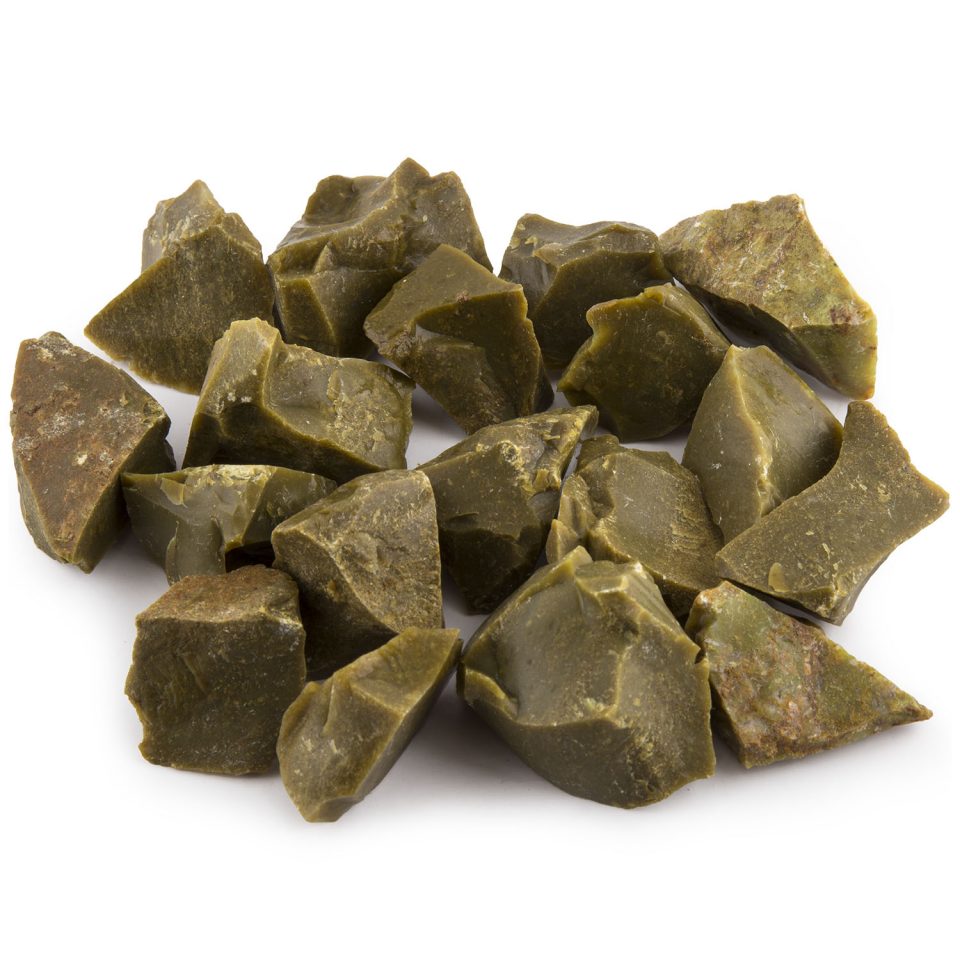
Green Opal and Prase Opal
Green Opal is a type of common Opal that ranges in color from a pale ivory to a dark green. It’s one of the easiest members of the Opal family to find with localities spread across 6 continents. The most notable specimens have come from Australia, Brazil, USA, Mexico, Madagascar and Peru. There are 2 green varieties of Common Opal, the first being a mixture of Opal and nontronite, the second (Prase) being Opal containing nickel (which gives it the familiar green color).
Green Opal in Metaphysics: Green Opal is an excellent healing stone. It is at times associated with the heart chakra simply because of the color, however, pink opals tend to work better for working with that chakra. Green Opals work extremely well for all types of physical healing. Opals have staying power (due to its high water content), so they are particularly good for any type of long-term health recovery. Green Opals can also be used for abundance and luck (mostly for abundance of non-material things).
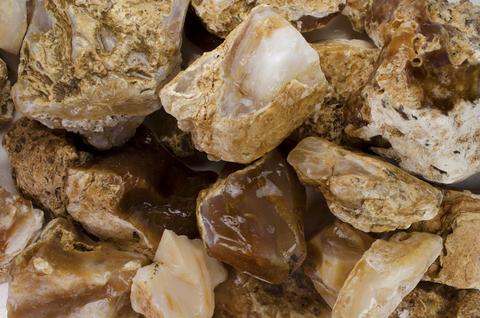
Honey Opal
Honey-yellow opal is a transparent to translucent Opal with an orange to orange-brown, honey-colored background. It may or may not display play of color. Honey opal is resinous to glassy in appearance.
Honey Opal in Metaphysics: Honey opal has strong associations with the Solar Plexus chakra. But due to it’s strong correlation to the water element, it sometimes is considered a second-class stone for empowerment. However, the Honey opal works beautifully with Self-confidence, helping to improve self-love by making yourself a priority in healing. Self-healing is a process and the Honey opal should not be overlooked in this regard. It also can be used by artists to improve creativity and clear blockages in the creative process. Honey Opal pairs very well with pink opal. This combo is especially good for victims of abuse who are reclaiming their personal power.
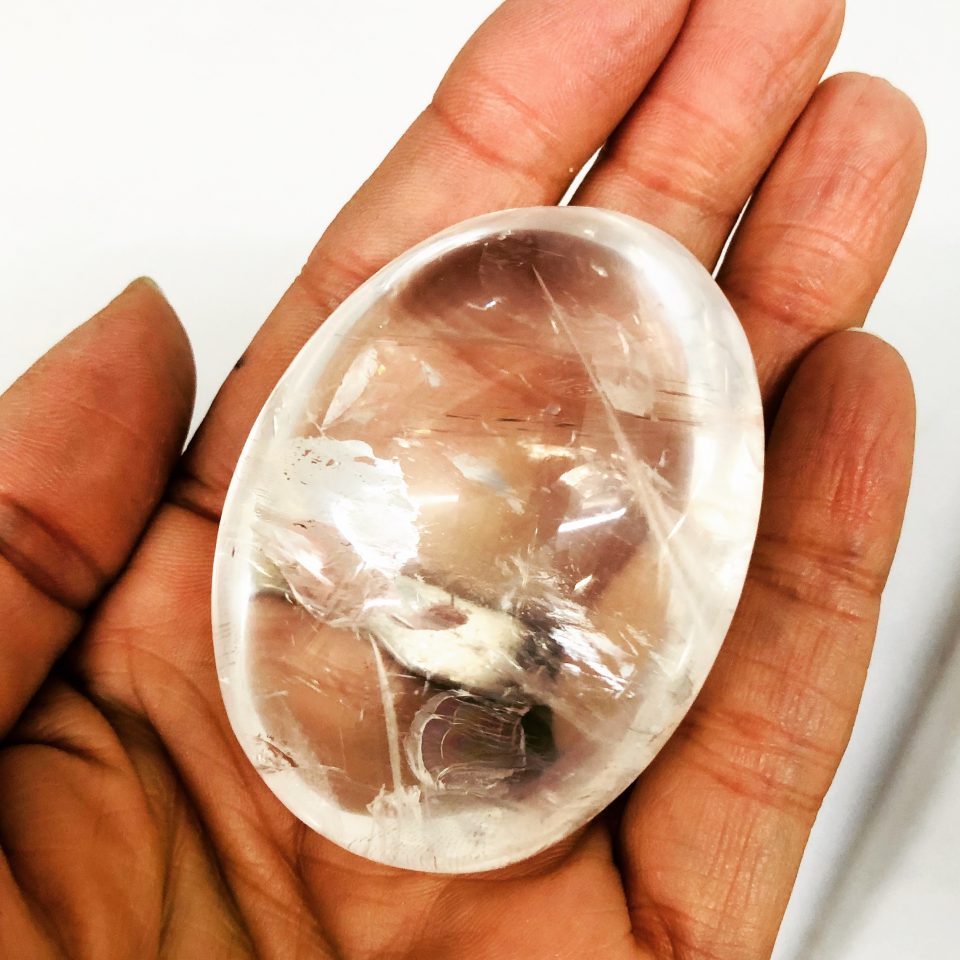
Girasol Opal vs. Girasol Quartz
A true Girasol Opal is a bluish-white translucent Opal with reddish reflections and a bluish glow or sheen that follows the light source as the stone is turned; because of its gelatinous appearance, it is sometimes called “Jelly Opal.” It is not a play of color as seen in Precious Opal but rather an effect from microscopic inclusions. The two most notable sources of this Opal are Oregon and Mexico, sometimes referred to as Water Opal when it is from Mexico. The term “Girasol Opal” has been mistakenly and improperly used to refer to Fire Opals, as well as a transparent to semi-transparent type of milky Quartz from Madagascar called Girasol Quartz, Blue Opal Quartz, or Madagascar Star Quartz that displays an asterism, or star effect.
Girasol Quartz is sometimes referred to as Opalized quartz. Girasol Quartz is created when liquid magma from a volcanic explosion cools down and transforms into igneous rocks. During this cooling down period, silica acid bubbles shift from being a gas/liquid into a solid compound. The bubble becomes a hollow space in the igneous rock and the silica acid becomes various types of Quartz crystals. The exact shade of the quartz depends on tiny inclusions n the silica acid. Girasol Quartz is generally mined in Madagascar.
Metaphysics of Girasol Quartz: Girasol Quartz has a similar energy to Clear Quartz, but as with opals (although it is not an opal) it has a strong connection with elemental water. It can still be used to augment other crystals but not as well as clear quartz. However, when it comes to healing and dreamwork, girasol quartz really shines. It’s strong association with water and it’s ordered internal structure makes it a powerful healing crystal especially when paired with other opals. It can also be used for lucid dreaming and to help children who suffer from night terrors.
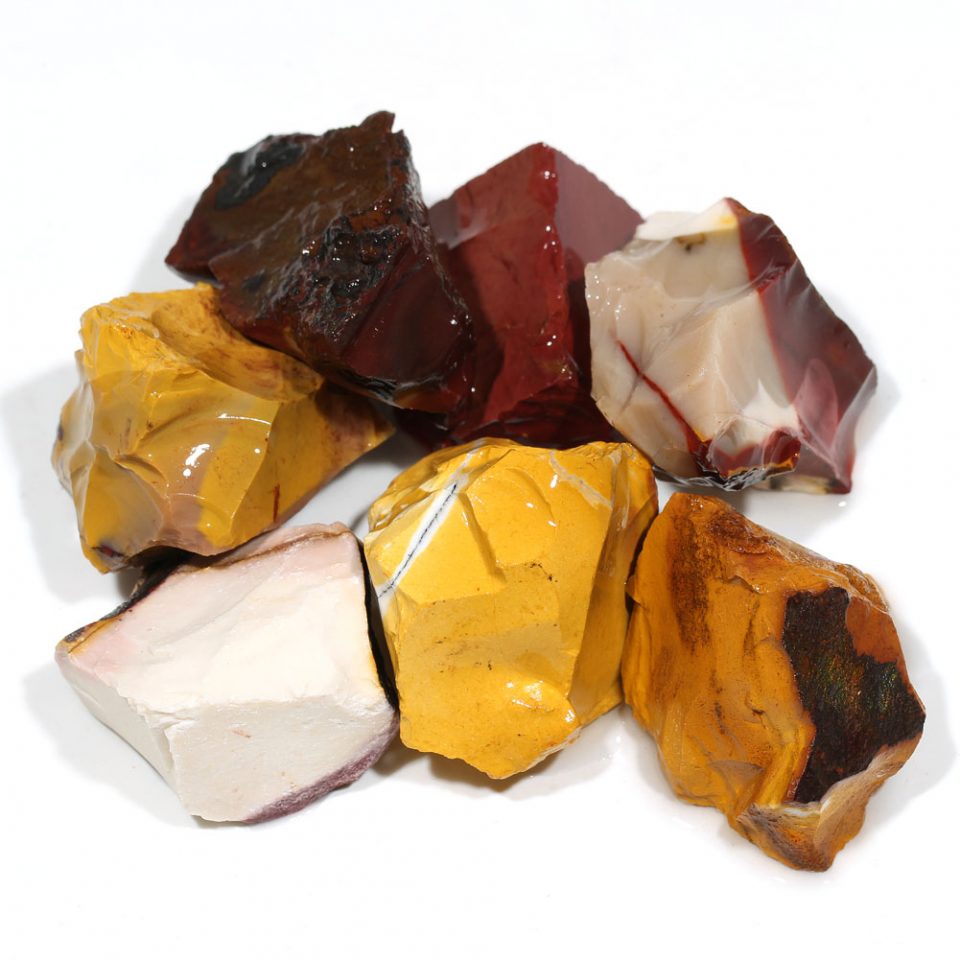
Mookaite Stone
Although often referred to as a Jasper, Mookaite is not. Mookaite can be described as chert, opalite, chalcedony or combinations of the three. The degree of silica in the material determines its description. This radiolarite comes from Western Australia. Mookaite is a visually striking gemstone found close to the Kennedy Ranges near Gascoyne Junction, a small town east of Carnarvon in Western Australia. The name Mookaite is derived from its location at Mooka Creek, on Mooka Station, once a large sheep grazing property. This crystal from Australia is often Opaline.
Radiolarites are cherts formed mainly from the thin siliceous shells of tiny marine organisms known as radiolarians. Radiolarians can be so abundant in some parts of the ocean that the seafloor sediments there are composed mainly of radiolarian debris. These lithify by the solution and redeposition of the shell debris in the form of a silica cement. In one area along Mooka Creek, the Windalia Radiolarite is exposed at the surface. The material here is special because it has been stained by groundwater into a variety of red, maroon, purple, white, cream, yellow and brown colors. The result is a brightly colored, hard, dense, very fine-grained rock that accepts an exceptional polish. It was named “mookaite” after the creek.
Metaphysics of Mookaite Stone: Mookaite stone is one of the best crystals for all types of physical healing. It’s high water content and connection with fossils makes it an exceptional crystal for those dealing with long term illness. Cancer, CP, IBS and many other physically debilitating conditions can be comforted by Mookaite stone. Paired with Girasol Quartz and green opal they make a powerful healing set for anyone struggling with a long recovery.
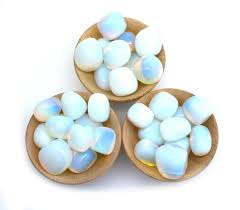
Opalite
Opalite is a man-made type of glass. Opalite is a trade name for man-made Opal-like stones.
Metaphysical Properties of Opaliote: Does this mean that opalite is useless? No. As with other man-made stones it can be used to bring comfort and to help calm the mind. Opalite is often used as a focus point for those who wish to calm the mind, to meditate or even to help during anxiety and panic attacks. Because it is glass, Opalite does not hold any energy of it’s own, so much like Obsidian it can be used for grounding and does not need to be cleansed.
